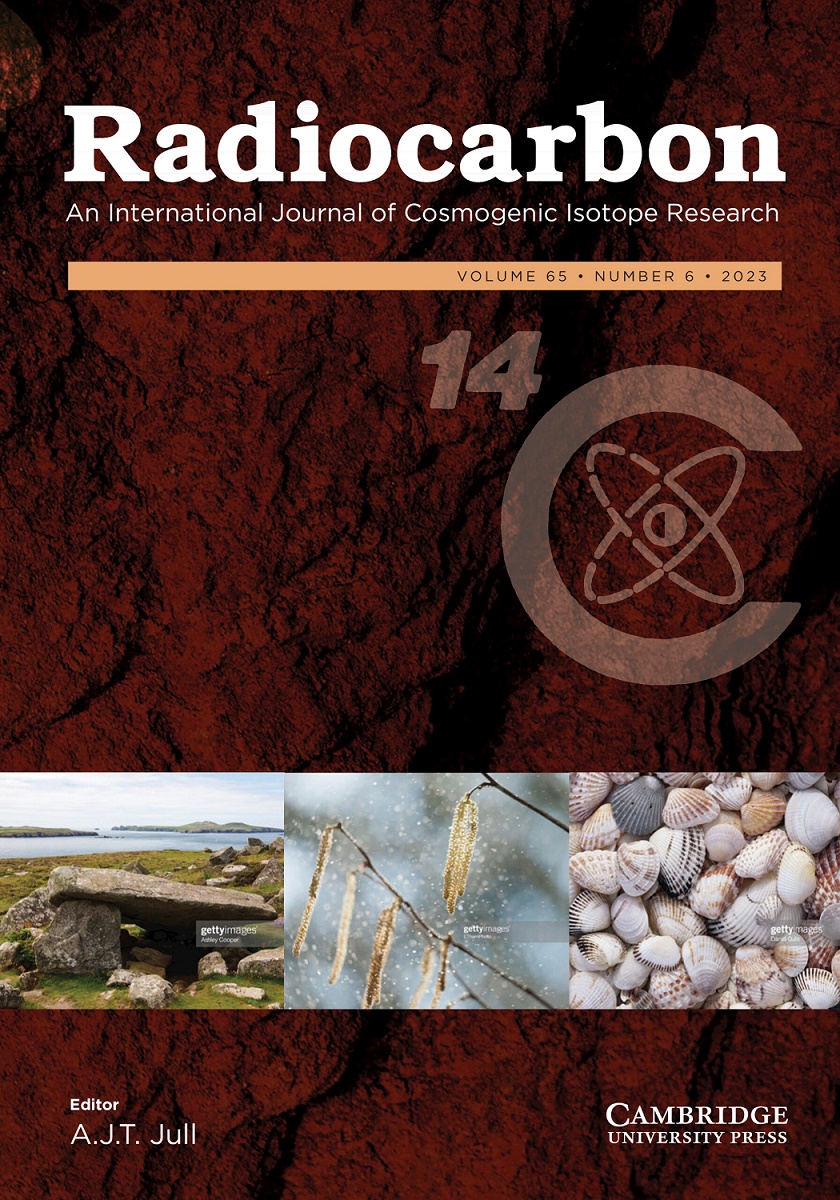RECONSTRUCTING THE CHRONOLOGY OF BUILDING THE SOUTHWEST CHURCH OF UMM EL-JIMAL, JORDAN BY AMS RADIOCARBON DATING OF MORTAR AND PLASTER
IF 1.3
3区 地球科学
Q2 GEOCHEMISTRY & GEOPHYSICS
引用次数: 0
Abstract
The research aims to reconstruct the chronology of building the Southwest Church, Umm el-Jimal, Jordan by AMS radiocarbon dating organic inclusions uncovered from the mortars collected from the floor of the church, seat of the apse and the base of the north wall. It sheds light on the major aspects of mortar recipes at the time of their production. Samples were examined macroscopically with magnifying lenses and characterized using archaeometric techniques of optical microscopy and X-ray diffraction. The radiocarbon dates showed that 594–643 AD is the most probable age for flooring and plastering the church and 995–1154 AD is the earliest possible date for its final collapse. The preparatory layers of the church floor were laid on an older one, probably of a yard, and its north wall was raised on an older base, both most probably date to the late fifth–early sixth century AD. The production recipe of the mortars is made from a lime binder and inclusions mainly of organic (charcoal) and inorganic (quartz, grog, volcanics). The mortars have the same recipe regardless their bedding and jointing functions which remained unchanged during the building stages of church complex.通过对砂浆和灰泥的 ams 放射性碳年代测定,重建约旦乌姆-吉玛尔西南教堂的建造年代学
这项研究旨在通过对从教堂地面、天顶和北墙基座采集的灰泥中发现的有机夹杂物进行 AMS 放射性碳测年,重建约旦乌姆吉马尔西南教堂的建造年代。它揭示了当时灰泥配方的主要方面。用放大镜对样品进行了宏观检查,并使用光学显微镜和 X 射线衍射考古技术对样品进行了鉴定。放射性碳年代测定结果表明,公元 594-643 年是教堂铺设地板和抹灰的最可能年代,而公元 995-1154 年则是教堂最终倒塌的最早可能年代。教堂地面的预备层铺设在一个较旧的地面上,可能是一个院子的地面,教堂的北墙是在一个较旧的基座上加高的,两者都很可能是公元五世纪末至六世纪初的作品。灰泥的制作配方是由石灰粘合剂和主要由有机物(木炭)和无机物(石英、格罗格、火山岩)组成的夹杂物。灰泥的配方相同,但其垫层和连接功能在教堂建筑群的建造阶段保持不变。
本文章由计算机程序翻译,如有差异,请以英文原文为准。
求助全文
约1分钟内获得全文
求助全文
来源期刊

Radiocarbon
地学-地球化学与地球物理
CiteScore
16.20
自引率
6.00%
发文量
85
审稿时长
6-12 weeks
期刊介绍:
Radiocarbon serves as the leading international journal for technical and interpretive articles, date lists, and advancements in 14C and other radioisotopes relevant to archaeological, geophysical, oceanographic, and related dating methods. Established in 1959, it has published numerous seminal works and hosts the triennial International Radiocarbon Conference proceedings. The journal also features occasional special issues. Submissions encompass regular articles such as research reports, technical descriptions, and date lists, along with comments, letters to the editor, book reviews, and laboratory lists.
 求助内容:
求助内容: 应助结果提醒方式:
应助结果提醒方式:


